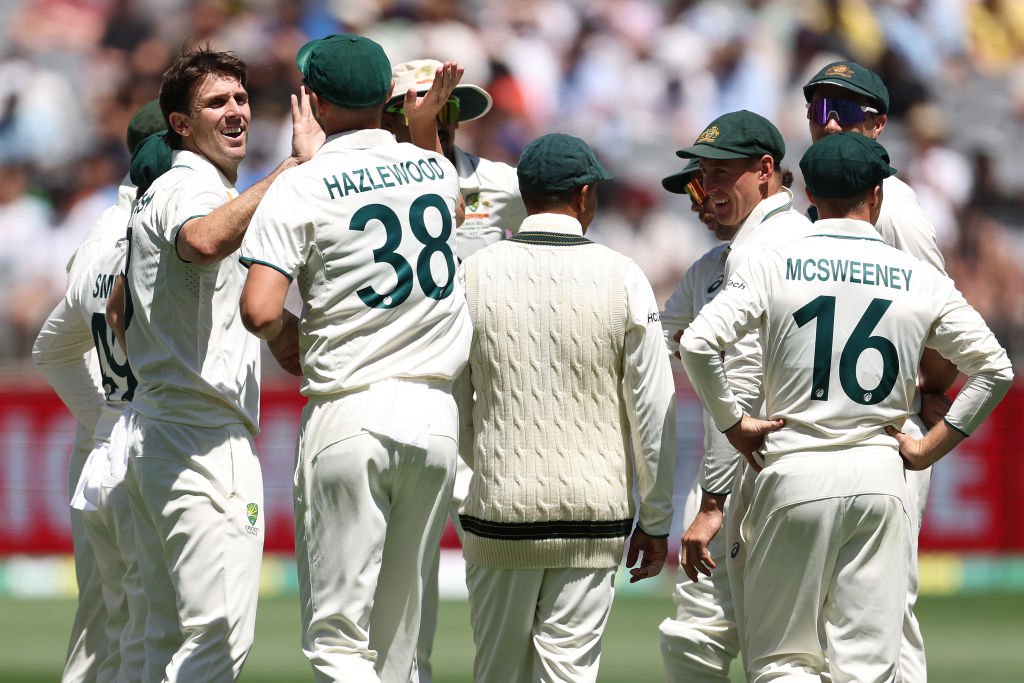
In the first session of the ongoing match between India and Australia at Perth, Australia has clearly taken the upper hand, making significant inroads into India’s top order. The session saw Australia claim four wickets for just 51 runs, a crucial breakthrough that gave them a strong advantage early in the contest. This dominant performance, particularly with the ball, places India on the back foot as they struggle to find stability.
The top-order batsmen for India, a group often regarded for their resilience, failed to assert themselves under pressure. KL Rahul and Virat Kohli, two of India’s most dependable players, were dismissed cheaply. Rahul, in particular, faced controversy regarding his dismissal, which led to a debate about the third umpire’s decision. His early exit left the Indian team struggling, as the players following him couldn’t stitch together any partnerships of significance. The constant fall of wickets has left India with few options to recover, with only the lower-middle order remaining to salvage the situation.
Australia’s bowling attack, led by the likes of Mitchell Starc and Josh Hazlewood, has been relentless. Starc, in particular, was a threat throughout the session, consistently challenging the Indian batsmen with his pace and swing. Hazlewood’s disciplined lines and lengths also put pressure on the Indian batsmen, forcing errors. Both bowlers maintained the pressure, forcing India’s top order into mistakes. The early breakthroughs from Australia have not only brought them into a dominant position but also created doubts in the minds of the Indian batsmen, who now face an uphill task.
As the session draws to a close, the Indian team will be hoping that the damage doesn’t extend further into the match. Australia’s disciplined bowling has exposed vulnerabilities in the Indian top order, but India still has a strong lower-middle order, which, if they can steady themselves and build partnerships, could help them recover. The contest is far from over, and while Australia has gained the upper hand, the unpredictable nature of Test cricket means that India still has opportunities to claw their way back into the match. The second session will be pivotal in determining whether India can mount a fightback or if Australia will continue to dominate.
As the session progressed, Australia’s fielding also played a pivotal role in containing India. With the bowlers striking regularly, the Australian fielders ensured that they cut off boundaries and maintained pressure through tight field placements. The aggressive fielding was a key component of Australia’s strategy to break India’s rhythm early in the match. It is a testament to the host team’s commitment and understanding of the game’s nuances, as they look to put India under further pressure.
The Indian dressing room will undoubtedly be concerned about the situation, but they will hope that their lower-order batsmen can pull off a recovery. Players like Shreyas Iyer and Ravindra Jadeja, known for their grit and experience, will need to play long innings if India is to have any chance of reaching a competitive total. However, the pitch at Perth, traditionally known for being fast and bouncy, could pose challenges for these players, especially with the Australian bowlers showing such control.
The outcome of this early phase in the match could set the tone for the rest of the day’s play. While Australia has seized control, cricket is known for its unpredictable nature. India’s middle order, bolstered by the likes of Iyer and Jadeja, could still turn the match around if they manage to adapt quickly to the conditions. For now, the Australian team has the upper hand, but they will know that the job is far from done. Maintaining focus will be key as India, though wounded, is a team that can often produce unexpected comebacks.
In terms of the broader picture, Australia’s performance in this session could serve as a reminder of the importance of early breakthroughs and controlling the flow of runs. The crucial aspect here has been the manner in which they managed to dismiss India’s big players, and the team will look to extend this dominance in the second session. If they can continue their pressure, they may very well have India on the ropes before too long.
For India, the fight is not over yet, but it will take a determined effort from their middle and lower-order batsmen to shift the momentum. As the match progresses, the focus will shift to how effectively India can recover and whether Australia can maintain their intensity. The next few sessions will be critical in determining the outcome of this contest.

